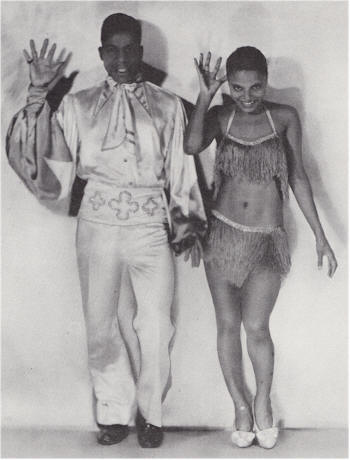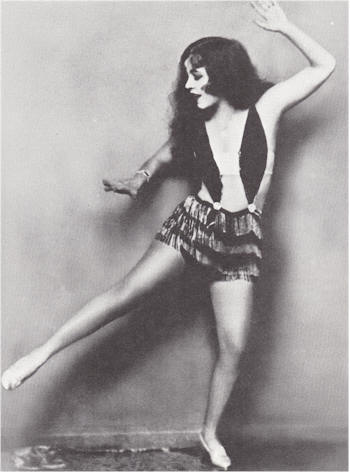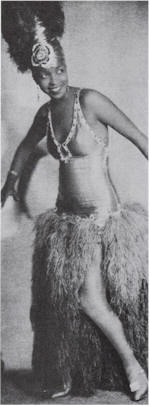
Earl “Snakehips” Tucker and Bessie Dudley. Photo from the book, The Cotton Club, courtesy of Lincoln Center Library.
Dance moves like the 'Shimmy' were around long before there were dance floors to show them off. Who knows when humans first started “shakin’ that thing?”
What exactly is the Shimmy? Well, you start out shaking your shoulders and keep it up until everything south of your neck turns into jelly. And by the way, you can’t move your feet when you do this dance move.
Americans gasped at the Shimmy for the first time in 1883 at the Chicago World’s Fair where Little Egypt “shook things up” with her Hootchy-Kootchy number. Even in the Roaring Twenties, the Shimmy raised eyebrows. But when Ethel Waters and Earl “Snake Hips” Tucker “shook the shimmy” in New York cabaret floorshows, it soon became a craze that swept the nation.
A Milwaukee-born starlet, Gilda
Gray introduced the Shimmy to
white audiences with her act in
the Ziegfeld Follies in 1923 and
it made her a star. Flo Ziegfeld
called Gilda his “golden girl”
because her Shimmy act broke all
box office records at the
Follies. Movie star Mae West
trumped Gilda’s claim to fame
when Mae boasted that she
invented the Shimmy. But Gilda
went on to become an icon of the
Jazz Age, dancing the Shimmy
every night at New York’s
Rendezvous Club after her stint
at the Follies.
In truth the Shimmy was around long before Gilda Gray and Mae West got into the act. Performing for black audiences in tent shows, Bessie Smith brought the house down with her “shimmy and shake” in Ma Rainey’s Rabbit Foot Minstrels. And in 1917 Ethel Waters had a hit with her specialty number, "Shim-Me-Sha-Wabble." Waters said, “I sure knew how to roll and quiver, and my hips would become whirling dervishes.”
Jazz rhythms inspired many dance crazes in the first half of the 20th century. But none were so outlandish and downright weird as a specialty known as “eccentric dancing." These were one-of-a-kind dances usually performed only by the person who invented them. There was Jigsaw Jackson, the Human Corkscrew, Dynamite Hooker, and Earl “Snake Hips” Tucker, a star of The Cotton Club revue. Photographs of the period always show "Snake Hips" on stage in the same costume: a white silk shirt with puffy sleeves, tight black bell-bottoms, a wide belt covered in sequins and a rhinestone-studded buckle. As part of his signature look, he had a long tassel hanging down from his belt buckle. He was said to hypnotize the ladies in the audience with his cobra-like stare.
This week Riverwalk Jazz celebrates the Shimmy, the Shake, the Quiver, the Belly Roll and the dancers who made these exotic moves famous. Jazz piano legend Dick Hyman, singer Vernel Bagneris and trumpeter Bob Barnard join The Jim Cullum Jazz Band to perform the music that inspired the dancers of Harlem in the 1920s.
Photo credit for Home Page: Earl “Snakehips” Tucker and Bessie Dudley. Photo from the book, The Cotton Club, courtesy Lincoln Center Library.
Based on Riverwalk Jazz script by Margaret Moos Pick ©2004



